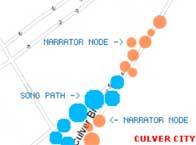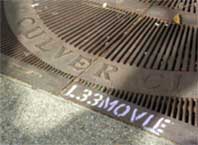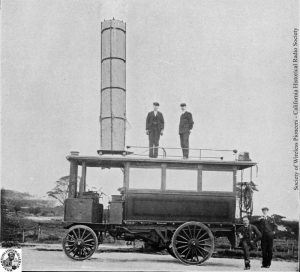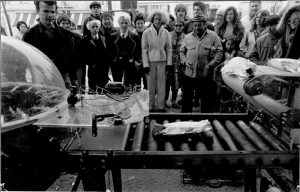Location33 investigates the potential for new types of music made possible by location tracking and wireless technologies. Listeners, with a GPS enabled PDA or mobile phone, walk around downtown Culver City, California and create a musical album that merges the traditional model of the song cycle with interactive narrative, location awareness, and game play.
Twenty nodes throughout the Culver City area act as portals into the world of the album. Each node is linked with a fragment of a song and when a player approaches one of the portals the music file is streamed to their device.


Each day a specific song is active. It is composed of fragments representing a verse, a chorus, or a bridge. As players walk around, they piece together the fragments, and develop the sense of their path being a song. Each day yields a different song, and all of the components for each day are composed within the limits of a singular musical idea or theme. The album is generated over the course of the week.
The album also focuses on a particular story element, which is sung by one of the characters, Mack, Mackbot, or the Narrator. It is up to the player to discover these musical story fragments and piece them together to form a cohesive story. In particular, the Narrator’s purpose is to contextualize the album within the setting of Culver City and to help the player with hints and instructions.
Location33 also adds elements of game play, asking the player to move around the space to find story fragments in a type of musical and narrative scavenger hunt.
Besides, players can alter the temporal structure of the album, performing time travel operations to experience the album without having to be in Culver City on each day of the week.
Location33 is the thesis project of William Carter, student in Interactive Media at the USC School of cinema and TV.







